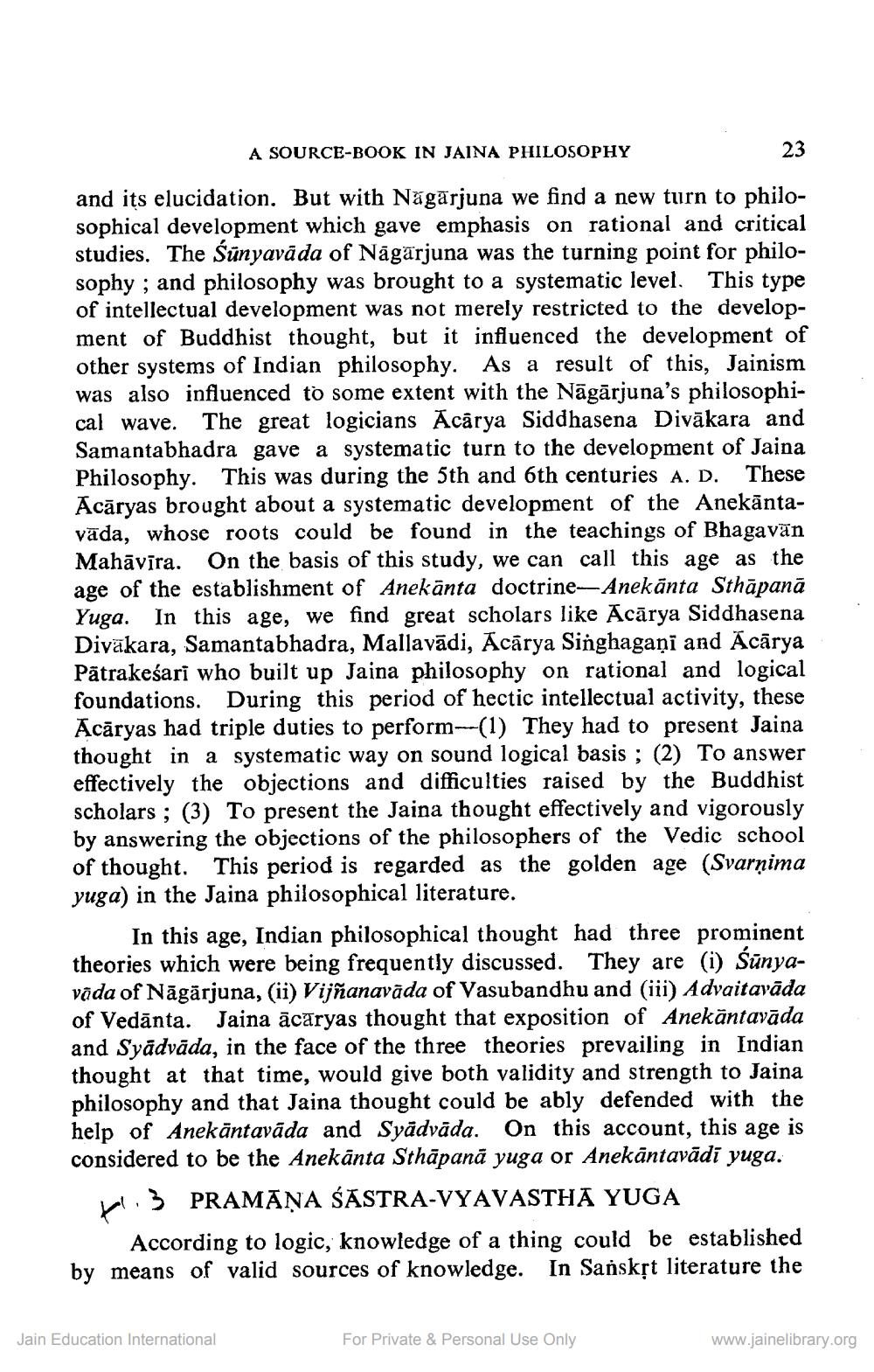________________
A SOURCE-BOOK IN JAINA PHILOSOPHY
23
and its elucidation. But with Nāgārjuna we find a new turn to philosophical development which gave emphasis on rational and critical studies. The Sünyavāda of Nāgārjuna was the turning point for philosophy; and philosophy was brought to a systematic level. This type of intellectual development was not merely restricted to the development of Buddhist thought, but it influenced the development of other systems of Indian philosophy. As a result of this, Jainism was also influenced to some extent with the Nāgārjuna's philosophical wave. The great logicians Ācārya Siddhasena Divākara and Samantabhadra gave a systematic turn to the development of Jaina Philosophy. This was during the 5th and 6th centuries A. D. These Acāryas brought about a systematic development of the Anekāntavāda, whose roots could be found in the teachings of Bhagavān Mahāvīra. On the basis of this study, we can call this age as the age of the establishment of Anekānta doctrine-Anekānta Sthāpanā Yuga. In this age, we find great scholars like Ācārya Siddhasena Divakara, Samantabhadra, Mallavādi, Acārya Singhagani and Ācārya Pâtrakeśari who built up Jaina philosophy on rational and logical foundations. During this period of hectic intellectual activity, these Acāryas had triple duties to perform--(1) They had to present Jaina thought in a systematic way on sound logical basis ; (2) To answer effectively the objections and difficulties raised by the Buddhist scholars ; (3) To present the Jaina thought effectively and vigorously by answering the objections of the philosophers of the Vedic school of thought. This period is regarded as the golden age (Svarņima yuga) in the Jaina philosophical literature.
In this age, Indian philosophical thought had three prominent theories which were being frequently discussed. They are (i) Śünyavāda of Nāgārjuna, (ii) Vijñanavāda of Vasubandhu and (iii) Advaitavāda of Vedānta. Jaina ācāryas thought that exposition of Anekāntavāda and Syādvāda, in the face of the three theories prevailing in Indian thought at that time, would give both validity and strength to Jaina philosophy and that Jaina thought could be ably defended with the help of Anekāntavāda and Syädvāda. On this account, this age is considered to be the Anekānta Sthāpanā yuga or Anekāntavādi yuga. H3 PRAMAŅA ŚĀSTRA-VYAVASTHA YUGA
According to logic, knowledge of a thing could be established by means of valid sources of knowledge. In Sanskst literature the
Jain Education International
For Private & Personal Use Only
www.jainelibrary.org




